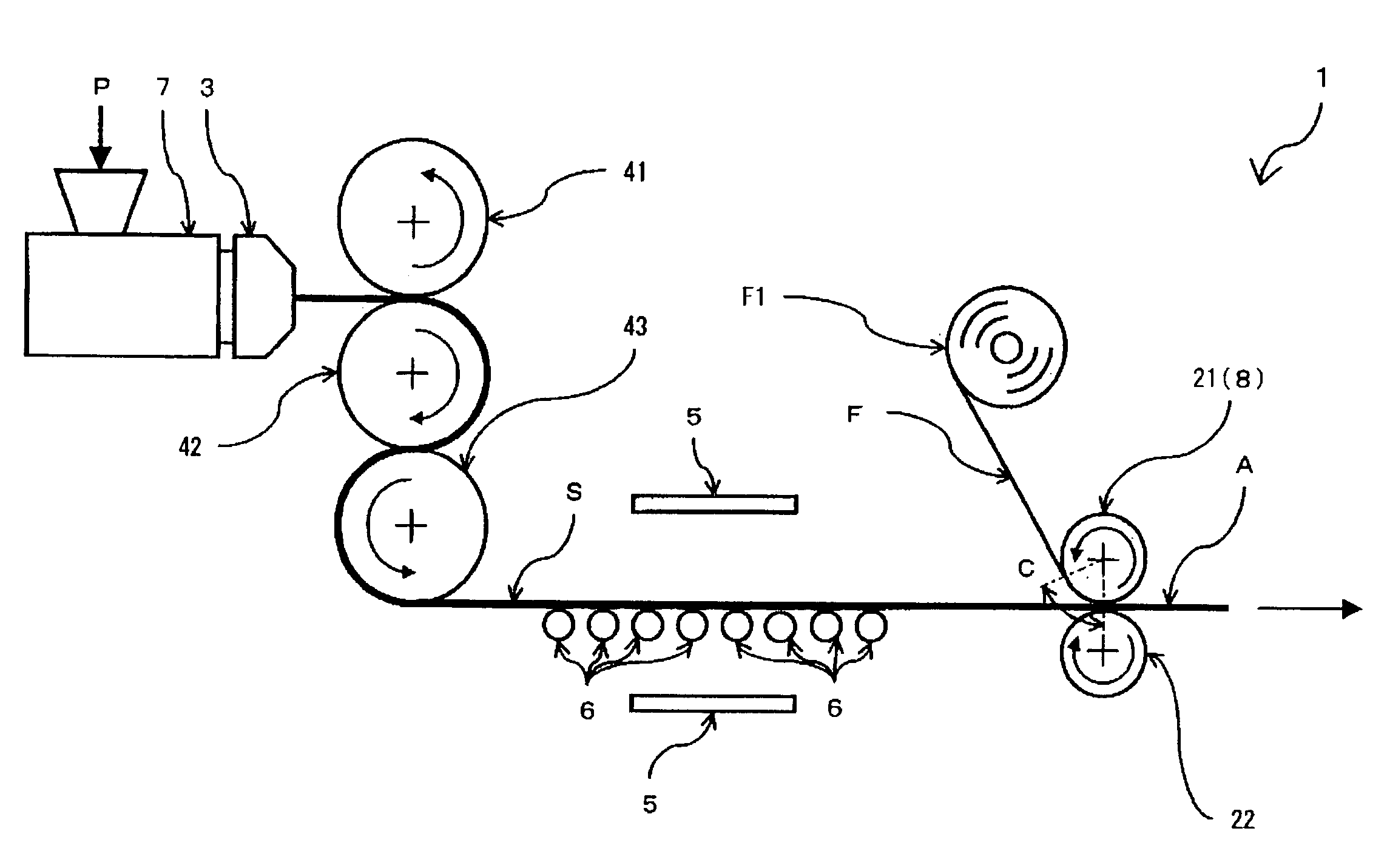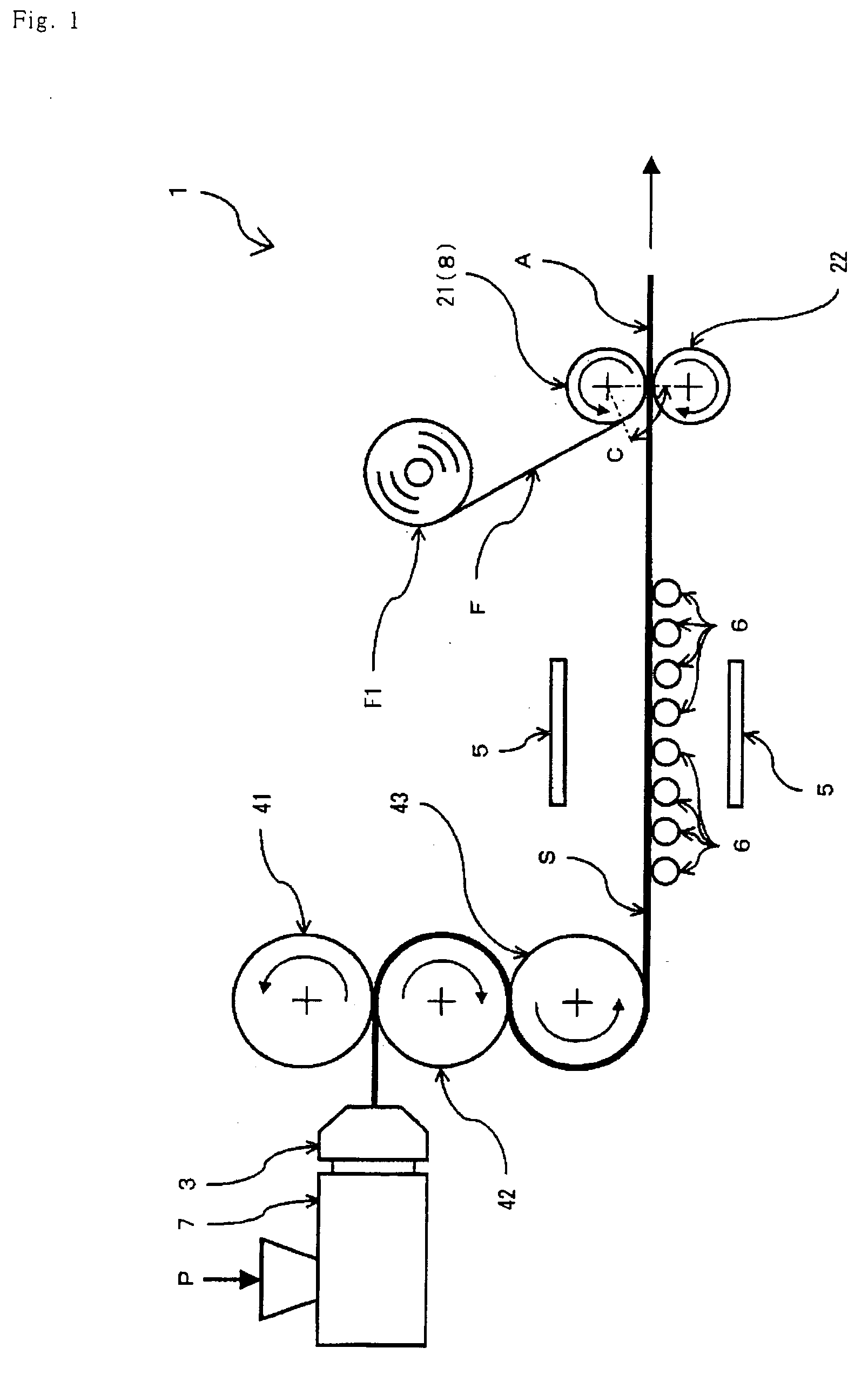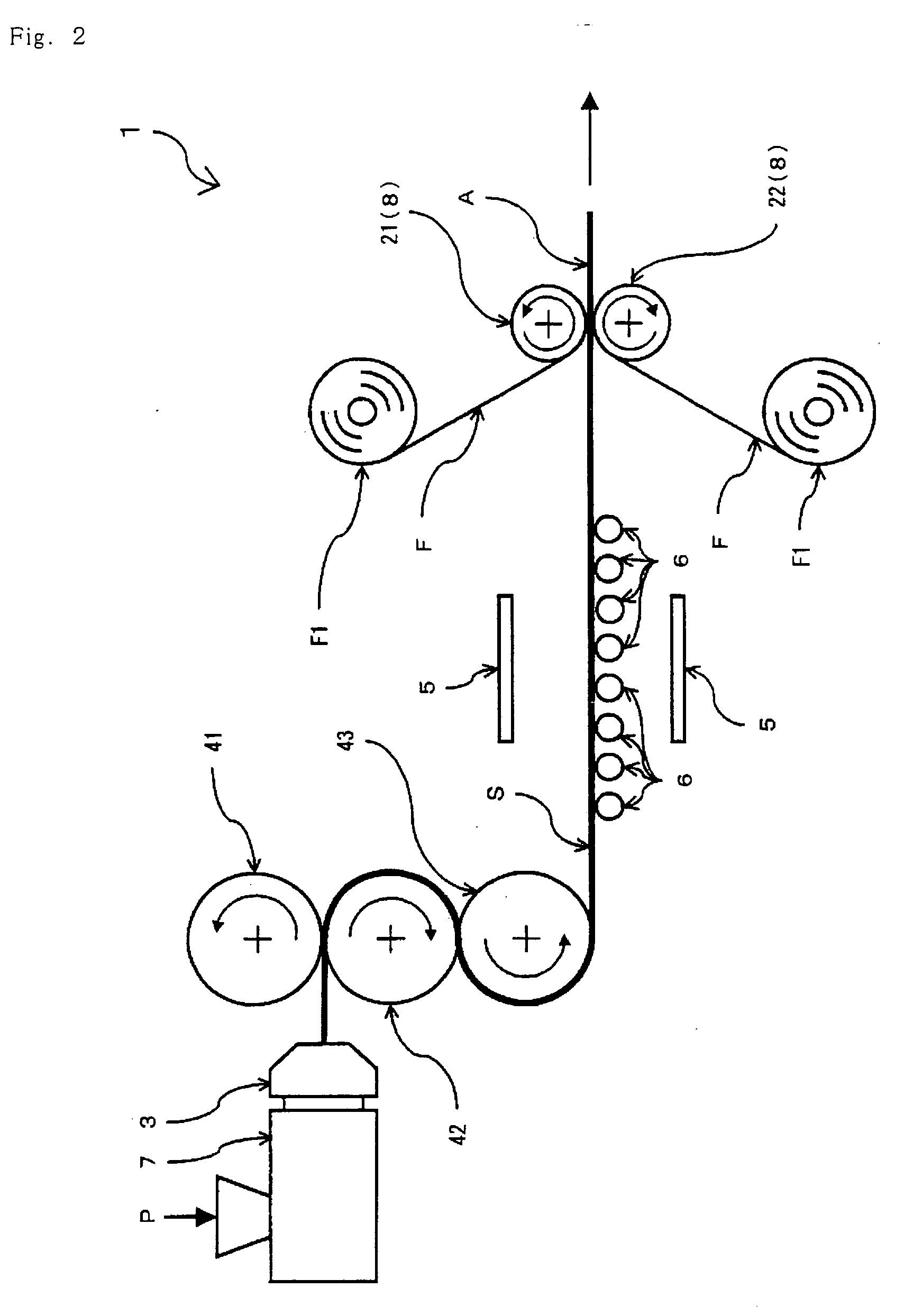Method for producing thermoplastic resin laminated sheet
- Summary
- Abstract
- Description
- Claims
- Application Information
AI Technical Summary
Benefits of technology
Problems solved by technology
Method used
Image
Examples
example 1
[0079] As shown in FIG. 1, an acrylic resin (P) having a glass transition temperature (Tgs) of 105° C. was heated, melted and kneaded by an extruder (7), and extruded through a die (3), followed by rolling with the three calender rolls (41, 42, 43) each having a diameter of 200 mm, to obtain a continuous acrylic resin sheet (S) having a thickness of 2 mm and a width of 200 mm. Thus obtained sheet (S) was heated from its both surfaces by a far infrared heaters (5) while being held generally horizontally by means of the guide rolls (6), and the sheet (S) was supplied into the gap between a pair of the rolls (21, 22) each having a diameter of 100 mm. The power of the heaters (5) was controlled such that the lamination surface (Sa) of the acrylic resin sheet (S) had a temperature (Ts) of 115° C. just before being sandwiched by the lamination rolls (21, 22).
[0080] On the other hand, an acrylic resin continuous film (F) having a single acrylic resin layer with a glass transition temperat...
example 2
[0082] Example 1 was repeated except that the power of the far infrared heaters (5) was controlled such that the lamination surface (Sa) of the acrylic resin sheet (S) had a temperature (Ts) of 120° C. just before being sandwiched by the lamination rolls while the temperature of the roll (21) was controlled such that the lamination surface (Fa) of the acrylic resin continuous film (F) had a temperature (Tf) of 70° C. just before being sandwiched by the lamination rolls, whereby an acrylic resin laminated sheet (A) was produced in which the acrylic resin film (F) was laminated onto one surface (Sa) of the acrylic resin sheet (S). No wrinkle was observed on the film (F) of the laminated sheet (A). As in Example 1, the sheet (A) was cut into the leaves, and the laminated sheet in the leaf form was cut using the electric saw. No delamination of the film (F) was observed across the cut section.
example 3
[0083] Example 1 was repeated except that the power of the far infrared heaters (5) was controlled such that the lamination surface (Sa) of the acrylic resin sheet (S) had a temperature (Ts) of 130° C. just before being sandwiched by the lamination rolls while the temperature of the rolls was controlled such that an acrylic continuous film (F) having single acrylic resin layer was used which layer had a glass transition temperature (Tgf) of 105° C. and a thickness of 125 μm without surface treatment in place of the film with the glass transition temperature of 80° C., whereby an acrylic resin laminated sheet (A) was produced in which the acrylic resin film (F) was laminated onto one surface (Sa) of the acrylic resin sheet (S). No wrinkle was observed on the film (F) of the laminated sheet (A). As in Example 1, the sheet (A) was cut into the leaves, and the laminated sheet in the leaf form was cut using the electric saw. No delamination of the film (F) was observed along the cut sect...
PUM
| Property | Measurement | Unit |
|---|---|---|
| Length | aaaaa | aaaaa |
| Length | aaaaa | aaaaa |
| Force constant | aaaaa | aaaaa |
Abstract
Description
Claims
Application Information
 Login to View More
Login to View More - R&D
- Intellectual Property
- Life Sciences
- Materials
- Tech Scout
- Unparalleled Data Quality
- Higher Quality Content
- 60% Fewer Hallucinations
Browse by: Latest US Patents, China's latest patents, Technical Efficacy Thesaurus, Application Domain, Technology Topic, Popular Technical Reports.
© 2025 PatSnap. All rights reserved.Legal|Privacy policy|Modern Slavery Act Transparency Statement|Sitemap|About US| Contact US: help@patsnap.com



